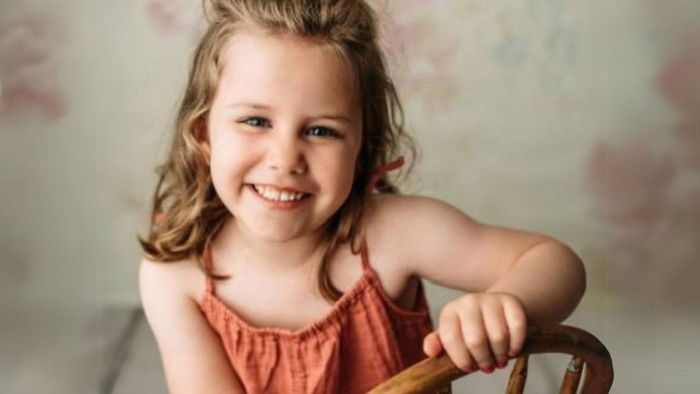Some of the things seven-year-old Holli loves about school are getting candy on her birthday, math (she could do math all day!), and playing on the swings during recess. Her specialized paraprofessional, Mr. Tyler, joins her in swinging and in hallway banter as they navigate Holli’s school day and the superpowers she channels while living with osteogenesis imperfecta.
Osteogenesis imperfecta (also known as brittle bone disease or OI) is a genetic condition that causes a defect in a protein found in bones—called collagen. The defect leads to fragile bones that can break easily. It is a lifelong condition that varies greatly in severity, affecting bone quality and bone mass. Simply put, Holli’s bones break easily. But with the help of Mr. Tyler, her parents, and her care team at Gillette Children’s, Holli lives a life defined by her dreams, not her diagnosis.
Holli’s Journey to an Osteogenesis Imperfecta Diagnosis
Holli was born a happy and healthy baby. When her parents, Devin and Richie, took Holli to her first pediatrician visit, however, something caught the doctor’s eye. The sclera, or the white outer layer, in both Holli’s eyes was bluish-grey. When that didn’t change with time, the doctor recommended that Devin and Richie see specialists who could follow up on his concern that Holli had osteogenesis imperfecta.
An imperfection in Holli’s skull formation eventually led to an official diagnosis of osteogenesis imperfecta type 1. It also led Holli to Gillette Children’s for care. “All we knew is we had a fragile baby,” Devin shared. “It changed everything – how to bathe her, how to get her dressed, even who could see her.”
Devin shared her fears and her frustrations with a work colleague, who put Devin in touch with a friend who worked at Gillette. From there, it took only one phone call to get a same-day appointment and the comfort, information, and care plan Holli’s family needed.
Coordinated Rare Disease Care
“We spent two hours with Dr. Kevin Sheridan, who reviewed notes from other hospitals and clinics Holli had visited,” says Devin. “He confirmed Holli’s diagnosis, but also said ‘You do not have a fragile baby. She’s going to be ok. Here’s what’s going to happen.’”
This guidance helped Holli’s family chart a path forward with a full team of specialists to support them. Coordinated care has helped with everything from managing Holli’s medical needs to enabling her to enroll in daycare and school along with her friends.
Holli’s favorite nurse, Krissy Plasch, has played a big role in her care at Gillette. They’ve bonded during Holli’s regular infusion appointments. “She makes me calmer when I get my stuff done,” says Holli. “She just makes me happy. I’ve seen her since I was one.”
Because of Holli’s early and ongoing care at Gillette, her infusion frequency is now down to once every six months. When she’s not on the swings at the school playground or solving math problems, Holli loves spending time with her Yorkie, Molly, and playing Roblox with her “kinda sister” – her best friend, Elsa.
A Worldwide Leader in Caring for Rare Diseases
With roughly 7,000 rare diseases in existence, approximately 25 to 30 million Americans currently live with one. Gillette is known worldwide for its expertise in caring for children diagnosed with rare diseases. Approximately one out of every five patients at Gillette Children’s have been diagnosed with a rare disease. Since its founding in 1897, Gillette has been at the forefront of treating children who have conditions affecting the brain, bones, and movement.
 Home Page
Home Page

